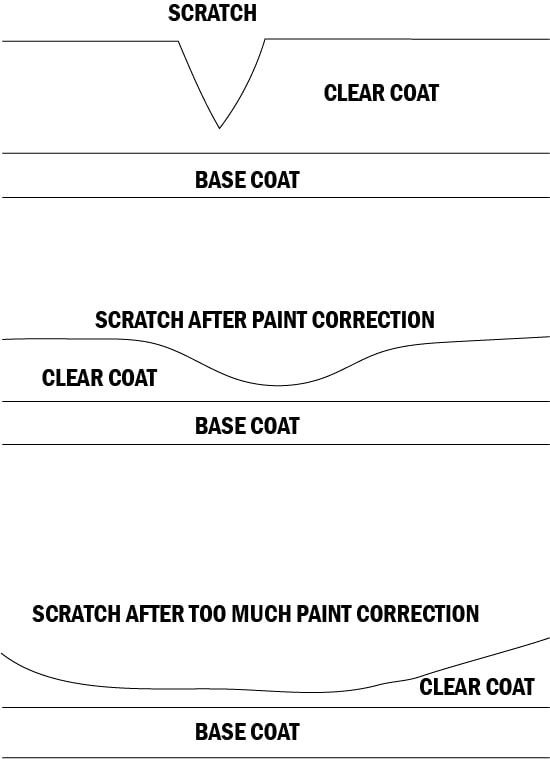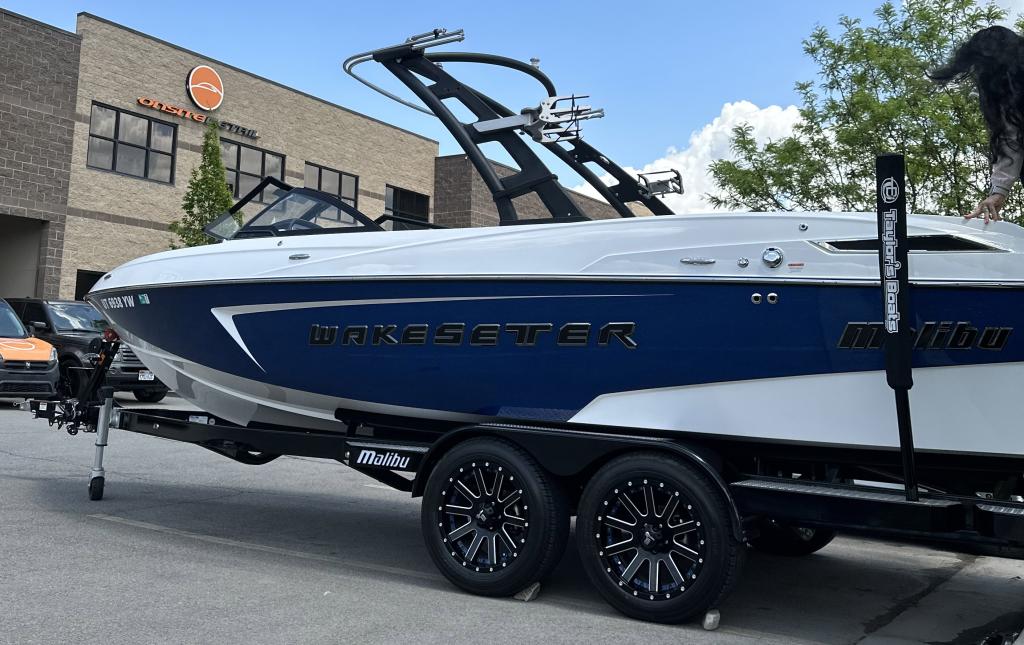Fixing Vehicle Paint, Paint Correction vs Paint Perfection
There are many different perspectives on paint correction vs paint perfection. There are many misconceptions about “fixing” scratches and defects in vehicle paint. The only truly “correctable” part of vehicle paint is the clear coat. Clearcoat is the uppermost part or the top layer of a vehicle’s paint and is clear (pigment-less) paint that provides UV protection to the other layers of paint beneath it. It is also responsible for the gloss and shine of the vehicle’s paint. The clear coat in modern paint systems varies in thickness from approximately 1.5 mils to 4 mils. A mil is a standard unit of measurement meaning one-thousandth of an inch or .001 of an inch. In other words, it would take 1000 mils to make an inch. Paint is also measured in microns, which is a metric unit of measure meaning 1 millionth of a meter. There are approximately 25.4 microns in 1 mil.
Clearcoat paint is only so thick. This means that if a scratch is deep enough you cannot fully “repair” it or even “hide” it without a re-spray, which means getting it repainted. In many cases, though paint can undergo the process of paint correction, which means polishing it or smoothing it out as much as possible.
Is there such a thing as paint perfection?
The simple straightforward answer is no. There is truly no perfect paint in the world. Even a freshly painted vehicle will have some minor paint imperfections or contamination and have the “need” for some paint correction.
The most common types of paint imperfections are below. There are many others that include oxidation (faded paint), clear coat failure (clear coat is gone and exposing color layer), dirt nibs, crow’s feet (small cracks in paint), solvent pop (air bubbles that are trapped in curing clear coat) and more. Some of these problems can be solved with paint decontamination, wet sanding, paint correction, or polishing, but unfortunately, some cannot.

Some imperfections are very superficial and can actually be fully removed, others can only be improved and then there are some that are just too deep into the paint.
Too much Paint Correction
If someone goes too hard on paint correction it can cause damage or burn through the clear coat. Even if someone does not burn through the clear coat but cuts it thin then it increase the chances of future clear coat failure. This is the reason we try to save every little bit of clear coat we have and always go with the least aggressive method first.
When we are doing paint correction we are not going for perfect paint. We are simply going for getting the paint to look as best as possible without ruining the clear coat or opening it up too much and risking that the clear coat fails down the road. With most scratches we are not going for complete 100% removal but we smooth them out to decrease the light that reflects off them so they are not seen.
There is a fine line between getting it to appear perfect and going too deep in the clear coat. In other words it takes proper training and experience to truly get it right.
Protection After Paint Correction
Now, I say there is no perfect paint but there are obvious differences between a well maintained show car and a daily driver that sees all sorts of weather and abuse. There are many different levels of paint correction and each vehicle and budget is different so there options available to everyone.
After paint is corrected there are many options as far as protection goes. Waxes, sealants and ceramic coatings are different options. Many final polishes have a sealant or wax build in that can be applied as the final polish is being done. These usually fill in the remaining minor scratches as well and make is shiny and glossy. This effect is only temporary though. The fillers, waxes and sealants will wear away and reveal the scratches again at some point.
Ceramic Coatings
For newer and show cars we highly recommend a ceramic coating for the best protection possible. We offer coatings with warranties from 2 to 7 years. Read our previous blogs about coatings to find out more;
What is a ceramic coating?
Why should you get a ceramic coating on your vehicle
Onsite Detail is Certified to install Opti Coat Professional Coatings and Inspiration Ceramic Coating. Our ceramic coating process involves full paint decontamination, paint correction and installation of the coating.
Let Us know if We can Help
Feel free to reach out to us for any paint correction needs you may have. You can always text us photos at (801) 412-9274 to help us give you a better estimate and get a good idea of what you’re needing. We love taking care of and protecting vehicles for both fleets and personal use.
by Chris Blaisdell, CD-SV, Onsite Detail


